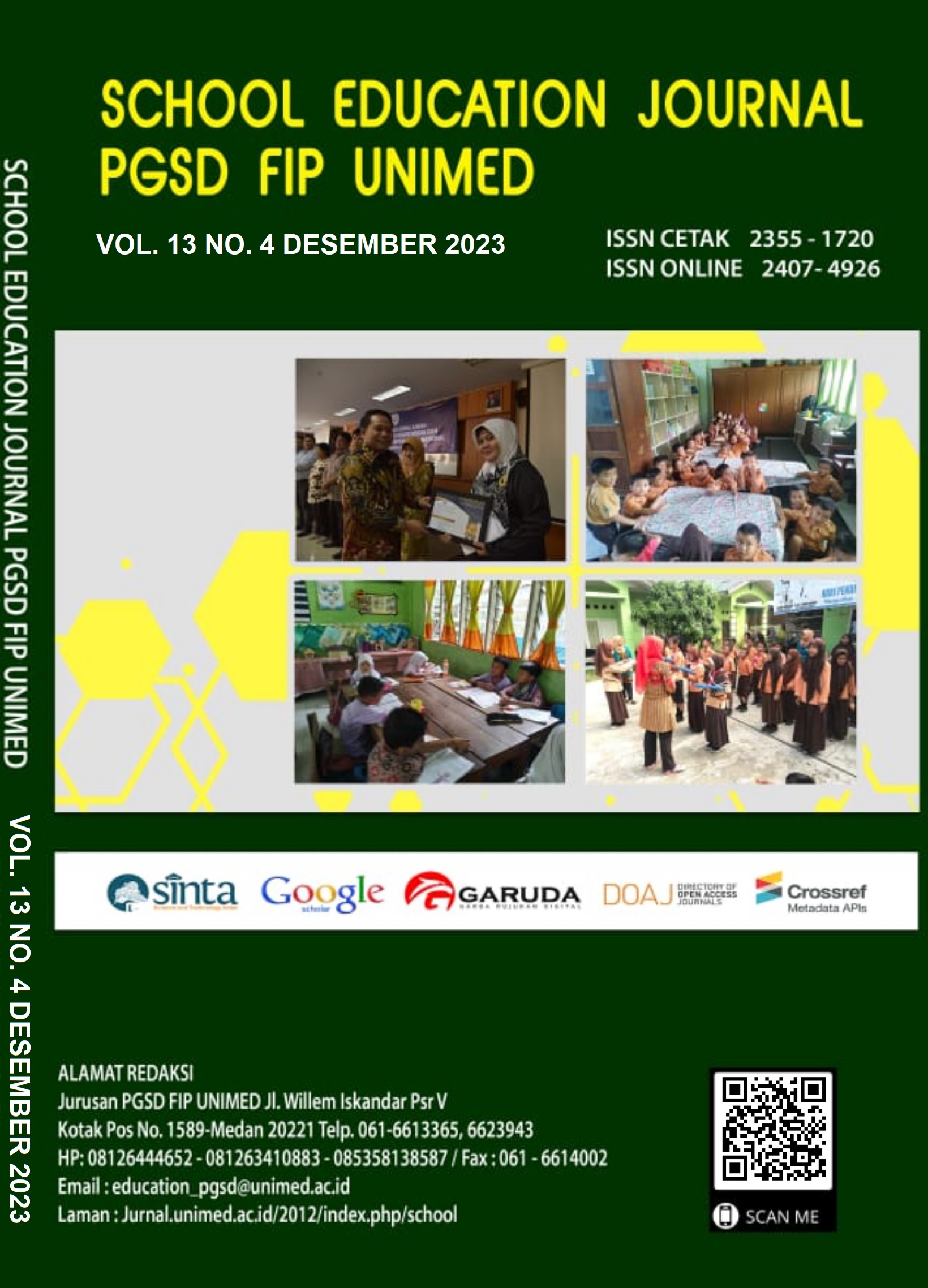ANALISIS VALIDITAS ISI PADA INSTRUMEN PENILAIAN AKHIR SEMESTER MATA PELAJARAN IPAS DI SD
DOI:
https://doi.org/10.24114/sejpgsd.v13i4.54309Keywords:
Instrument Analysis, Content Validity, Aiken’s VAbstract
This research aims to analyze the content validity of instruments used at schools. In this research, content validity is measured from three aspects, namely material, construct, and language/culture/ethics aspects. The method used in this research uses quantitative descriptive methods. Content validity was assessed by 8 validators by filling a questionnaire. The results obtained from the validator are then analyzed by calculating the Aiken's V index. The Aiken's V value is used to ensure that the instrument used meets the content validity criteria and is categorized as suitable for use as a measuring tool. Based on analysis using Aiken's V, the averages obtained for the material, construct, and language/culture/ethics aspects were respectively in the very high, very high, and high categories. And overall the content validity of the instruments used in schools has met good content validity standards in the very high category. However, determining the criteria for a good assessment instrument is not only content validity, but also construct validity, empirical or item validity, and reliability. So, to further ensure that the quality of the end-of-semester assessment instruments used in schools is categorized as fully adequate, further research can be carried out by future researchers.References
Abdullah, M. (2015). Metode Penelitian Kuantitatif. Aswaja Pressindo. Yogyakarta.
Ariany, R. L., & Al-Ghifari, A. (2018). Penggunaan Software Anates Untuk Validasi Instrumen Tes. Al-Khidmat, 1(1), 73“78. https://doi.org/10.15575/jak.v1i1.3327.
Arif, M. (2014). Penerapan Aplikasi Anates Bentuk Soal Pilihan Ganda. 1(1), 1-9.
Arifin, Z. (2017). Kriteria instrumen dalam suatu penelitian. Jurnal Theorems (the original research of mathematics), 2(1). http://dx.doi.org/10.31949/th.v2i1.571
Arikunto, S. (2016). Dasar-Dasar Evaluasi Pendidikan. Jakarta: Rineka Cipta.
Azwar, S. (2012). Reabilitas dan Validitas (Edisi 4). Pustaka Pelajar.
Fiska, J. M., Hidayati, Y., Qomaria, N., & Hadi, W. P. (2021). Analisis Butir Soal Ulangan Harian Ipa Menggunakan Software Anates Pada Pendekatan Teori Tes Klasik. Natural Science Education Research, 4(1), 65“76. https://doi.org/10.21107/nser.v4i1.8133.
Kemdikbud. (2020). Desain Pengembangan Soal Asesmen Kompetensi Minimum. Desain Pengembangan AKM, 1“125.
Nabil, N. R. A., Wulandari, I., Yamtinah, S., Ariani, S. R. D., & Ulfa, M. (2022). Analisis Indeks Aiken untuk Mengetahui Validitas Isi Instrumen Asesmen Kompetensi Minimum Berbasis Konteks Sains Kimia. Jurnal Penelitian Pendidikan, 25(2). https://doi.org/10.20961/paedagogia.v25i2.64566
Putri, B. A., Nurcahyani, N., & Rahmasari, R. (2022). Validitas Instrumen Penilaian Penguasaan Materi Pada Siswa Kelas 2 Sekolah Dasar. In Proseding Didaktis: Seminar Nasional Pendidikan Dasar (Vol. 7, No. 1, pp. 1323-1333).
Suhardi, I. (2022). Perangkat Instrumen Pengembangan Paket Soal Jenis Pilihan Ganda Menggunakan Pengukuran Validitas Konten Formula Aiken™s V. Jurnal Pendidikan Tambusai, 6(1), 4158-4170.
Surapranata, S. 2005. Analisis, Validitas, Reliabilitas, dan Interpretasi Hasil Tes. Bandung: PT Remaja Rosdakarya Offse.
Undang-Undang Republik Indonesia. (2003). Undang-Undang Republik Indonesia, Nomor 20, Tahun 2003, tentang Pendidikan.
Downloads
Published
Issue
Section
License
Authors whose manuscripts are approved are approved as follows:
The publication rights for all journal manuscript materials published/published on the SEJ (School Education Journal) E-Journal site are held by the editorial board with the author's knowledge (moral rights remain with the manuscript authors).
The formal legal requirements for accessing this electronic digital journal article are subject to the terms of the Creative Commons Attribution-ShareAlike (CC BY) license, which means that E-Journal SEJ (School Education Journal) has the right to store, transfer media/format, manage in the form of a database, maintain, and publish articles without asking permission from the author as long as the author's name remains as the copyright owner.
Manuscripts published/published electronically are open access for educational, research, and library purposes.

